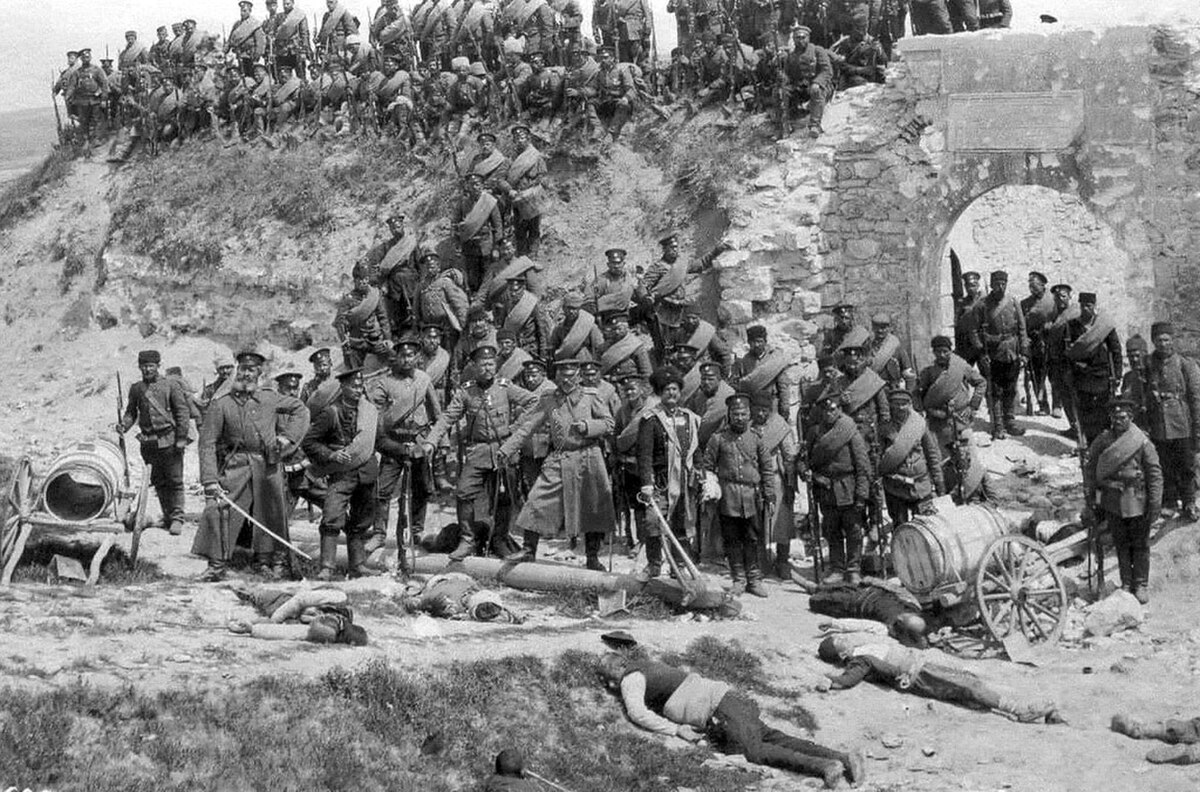
Fall of Adrianople
Edirne, Edirne Merkez/Edirne,The failure of the Şarköy-Bulair operation and the deployment of the Second Serbian Army, with its much-needed heavy siege artillery, sealed Adrianople's fate. On 11 March, after a two weeks' bombardment, which destroyed many of the fortified structures around the city, the final assault started, with League forces enjoying a crushing superiority over the Ottoman garrison. The Bulgarian Second Army, with 106,425 men and two Serbian divisions with 47,275 men, conquered the city, with the Bulgarians suffering 8,093 and the Serbs 1,462 casualties.[61] The Ottoman casualties for the entire Adrianople campaign reached 23,000 dead.[62] The number of prisoners is less clear. The Ottoman Empire began the war with 61,250 men in the fortress.[63] Richard Hall noted that 60,000 men were captured. Adding to the 33,000 killed, the modern "Turkish General Staff History" notes that 28,500-man survived captivity[64] leaving 10,000 men unaccounted for[63] as possibly captured (including the unspecified number of wounded). Bulgarian losses for the entire Adrianople campaign amounted to 7,682.[65] That was the last and decisive battle that was necessary for a quick end to the war[66] even though it is speculated that the fortress would have fallen eventually because of starvation. The most important result was that the Ottoman command had lost all hope of regaining the initiative, which made any more fighting pointless.[67]
The battle had major and key results in Serbian-Bulgarian relations, planting the seeds of the two countries' confrontation some months later. The Bulgarian censor rigorously cut any references to Serbian participation in the operation in the telegrams of foreign correspondents. Public opinion in Sofia thus failed to realize the crucial services of Serbia in the battle. Accordingly, the Serbs claimed that their troops of the 20th Regiment were those who captured the Ottoman commander of the city and that Colonel Gavrilović was the allied commander who had accepted Shukri's official surrender of the garrison, a statement that the Bulgarians disputed. The Serbs officially protested and pointed out that although they had sent their troops to Adrianople to win for Bulgaria territory, whose acquisition had never been foreseen by their mutual treaty,[68] the Bulgarians had never fulfilled the clause of the treaty for Bulgaria to send 100,000 men to help the Serbians on their Vardar Front. The friction escalated some weeks later, when the Bulgarian delegates in London bluntly warned the Serbs that they must not expect Bulgarian support for their Adriatic claims. The Serbs angrily replied that to be a clear withdrawal from the prewar agreement of mutual understanding, according to the Kriva Palanka-Adriatic line of expansion, but the Bulgarians insisted that in their view, the Vardar Macedonian part of the agreement remained active and the Serbs were still obliged to surrender the area, as had been agreed.[68] The Serbs answered by accusing the Bulgarians of maximalism and pointed out that if they lost both northern Albania and Vardar Macedonia, their participation in the common war would have been virtually for nothing. The tension soon was expressed in a series of hostile incidents between both armies on their common line of occupation across the Vardar valley. The developments essentially ended the Serbian-Bulgarian alliance and made a future war between the two countries inevitable.
